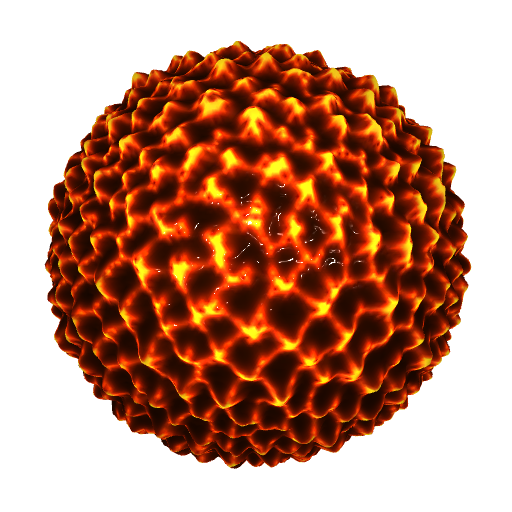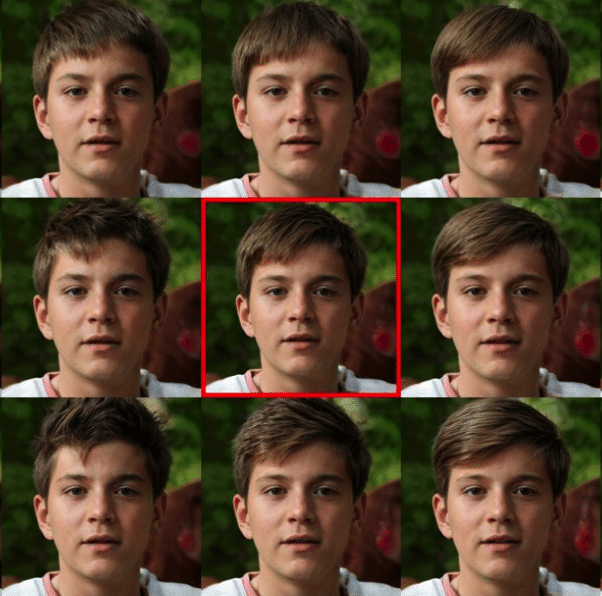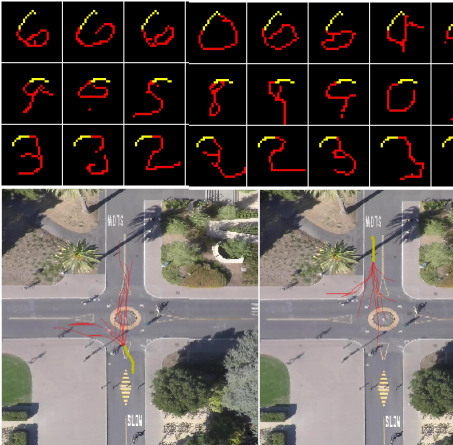|
I am a postdoctoral researcher at EPFL Lausanne, working jointly with the Image and Visual Representation Laboratory (IVRL) and the Chair of Statistical Field Theory (CSFT) with Clément Hongler. I recently completed my PhD at EPFL under the supervision of Sabine Süsstrunk. Before joining EPFL, I obtained my bachelor's degree in Computer Engineering, with a minor in Mathematics, from Sharif University of Technology in Iran. Research interests. I am broadly interested in Artificial Life and Computer Vision/Graphics, and in mixing ideas between these areas. In Artificial Life, I am interested in self-organization, self-replication, and in discovering or designing systems that exhibit unbounded, open-ended growth in complexity. In computer graphics and vision, I have worked extensively on textures and am particularly interested in the role textures play in visual perception. Much of my recent work uses Neural Cellular Automata (NCA) as a minimal, trainable model of self-organization and pattern formation. Update: I am looking for postdoc or research scientist positions. Feel free to reach out to discuss potential opportunities or collaborations. Email / CV / Google Scholar / Github / Twitter |
|
|
|
|---|---|
| Dec. 2025 | Distinguished PhD Thesis Award From EPFL |
| Nov. 2025 | Best Poster Award From BMVC 2025 Conference |
| July. 2024 | Best Student Paper Award From ALife 2024 Conference |
| Dec. 2023 | Teaching Assistance Excellence Award From EPFL |
| Aug. 2022 | Best Paper Award From SIGGRAPH 2022 Conference |
| Oct. 2020 | Doctoral Fellowship from EDIC EPFL |
| Sept. 2019 | Gold Medal in Iranian National Statistics Olympiad |
| Aug. 2014 | Gold Medal in Iranian National Physics Olympiad |
|
|
|
|---|---|

|
Ehsan Pajouheshgar*, Yitao Xu*, Alexander Mordvintsev, Eyvind Niklasson, Tong Zhang, Sabine Süsstrunk SIGGRAPH, 2024 Demo / arXiv / code MeshNCA is a type of Neural Cellular Automata that can operate on cells arranged on a 3D mesh. MeshNCA can simultaneously generate multiple textures (albedo, normal, roughness, ...) for Physically-based-rendering (PBR). It also enables grafting multiple NCA models on each other to create mixture of textures. Checkout the demo!
|

|
Ehsan Pajouheshgar, Yitao Xu, Sabine Süsstrunk Artificial Life (ALife), 2024 (Best Student Paper Award) Demo / arXiv / code We propose a small change to Neural Cellular Automata (NCA) and show that the update rule learned by NoiseNCA actually correspond to a continuous space-time Partial Differential Equation (PDE). Utilizing this emergent space-time continuity, NoiseNCA allows changing the speed of the pattern formation and the scale of the patterns at inference time. Checkout the demo!
|

|
Ehsan Pajouheshgar*, Yitao Xu*, Tong Zhang, Sabine Süsstrunk CVPR, 2023 Demo / arXiv / code Dynamic Neural Cellular Automata (DyNCA), is a method that enables real-time and controllable dynamic texture synthesis. Checkout the demo!
|

|
Yael Vinker, Ehsan Pajouheshgar, Jessica Y. Bo, Roman Bachmann, Amit Haim Bermano, Daniel Cohen-Or, Amir Zamir, Ariel Shamir SIGGRAPH, 2022 (Best Paper Award) Project Page / Demo / arXiv / code Our work converts an image of an object to a sketch, allowing for varying levels of abstraction, while preserving its key visual features.
|
|
|
|
|---|---|

|
Dongqing Wang, Ehsan Pajouheshgar, Yitao Xu, Tong Zhang, Sabine Süsstrunk BMVC 2025 (Best Poster Award) arXiv VNCA is a novel model for efficient volumetric style transfer that synthesizes multi-view consistent stylizing features on the target smoke in real-time, while exhibiting temporally coherent transitions between stylized frame. |

|
Maria Larsson, Hodaka Yamaguchi, Ehsan Pajouheshgar, I-Chao Shen, Kenji Tojo, Chia-Ming Chang, Lars Hansson, Olof Broman, Takashi Ijiri, Ariel Shamir, Wenzel Jakob, and Takeo Igarashi SIGGRAPH, 2025 Project Page / Proceedings / Code Dataset We introduce Mokume, a dataset of 190 solid wood samples with high-resolution photos, ring annotations, and volumetric CT scans for realistic wood texturing. Using this data, we reconstruct a 3D growth field and synthesize volumetric color textures from a few exterior photos, combining procedural modeling with Neural Cellular Automata (NCA) to closely match real wood.
|

|
Yitao Xu, Ehsan Pajouheshgar, Sabine Süsstrunk Artificial Life (ALife), 2024 arXiv / Coming Soon Trained Neural Cellular Automata (NCA) models exhibit many emergent behaviors, such as self-organization, and spontaneous motion. In this paper we investigate the spontaneous motion property of NCAs. We find that the ratio between the number of channels in the cell state and the number of hidden neurons in the update rule is a key factor that controls the NCA stability and emergent motion in the NCA generated patterns.
|

|
Ehsan Pajouheshgar, Tong Zhang, Sabine Süsstrunk ICASSP, 2022 arXiv / code We introduce the Locally Effective Latent Space Direction (LELSD) framework, a novel approach to localized image editing in Generative Adversarial Networks (GANs), which utilizes a new objective function incorporating supervision from a pre-trained segmentation network.
|

|
Ehsan Pajouheshgar, Christoph H. Lampert NeurIPS 2018, (Workshop on Modeling and Decision-Making in the Spatiotemporal Domain) arXiv We present an uncomplicated non-parametric baseline that attains the lowest error based on a widely adopted metric within the field. This serves to demonstrate the misleading nature of this particular metric.
|
|
|
|
|---|---|
| Dec. 2025 | I have received the Distinguished PhD Thesis Award from EPFL. |
| Nov. 2025 | VNCA won the Best Poster Award at BMVC 2025. |
| Aug. 2025 | I have started a joint postdoc between IVRL and CSFT at EPFL |
| July. 2024 | NoiseNCA won the Best Student Paper Award at ALife 2024. |
| July. 2024 | I will attend Siggraph 2024 Conference. Visa problems... |
| July. 2024 | I will attend Artificial Life (ALife 2024) Conference. Let's meet there! |
| May. 2023 | Two papers accepted to ALife 2024. |
| Mar. 2023 | MeshNCA was accepted as a journal paper to SIGGRAPH 2024. |
|
|